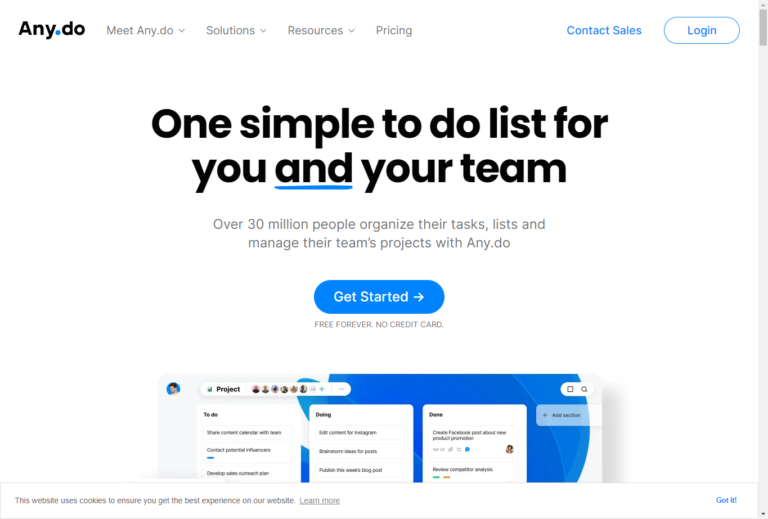
Are you ready to unlock the secrets to blogging success? Look no further than “The Ultimate Guide to Blogging Success” by BlogHunch. Packed with expert tips, proven strategies, and insider knowledge, this comprehensive guide is your roadmap to becoming a successful blogger. Whether you’re just starting out or looking to take your blog to the next level, this guide has everything you need to build a thriving online presence.
From creating captivating content to mastering social media promotion, it’s time to turn your blogging dreams into a reality. Get ready to up your game and achieve blogging success like never before!

Content Creation
Identify your target audience
To create successful and engaging content, it’s crucial to understand your target audience.
Take some time to research and define who your ideal reader is. Consider their demographics, interests, and pain points. By knowing who you are writing for, you can tailor your content to meet their needs and preferences.
Choose a niche
Choosing a niche is essential for gaining visibility and building a loyal audience.
Select a topic or subject that you’re passionate about and that has enough demand in the market. By focusing on a specific niche, you become an expert in that area and can provide valuable and unique content to your readers.
Develop your writing skills
Writing is a fundamental skill for any blogger. Practice regularly and strive to improve your writing techniques.
Read books, take writing courses, or join writing communities to gain valuable feedback and guidance. Remember to write in a conversational and friendly tone to engage your readers and make your content more relatable.
Create a content calendar
A content calendar helps you stay organized and consistent with your blog posts.
Plan and schedule your content in advance, taking into consideration important events, holidays, or trends that relate to your niche. This will ensure that you always have fresh and relevant content available for your audience.
Craft catchy headlines
Your headlines are the first thing your readers see, so it’s crucial to make them compelling.
Use action verbs, ask intriguing questions, or create a sense of urgency to catch your readers’ attention. Incorporate relevant keywords to optimize your headlines for search engines. A catchy headline will not only attract more clicks but also encourage readers to share your content.
Website Setup
Select a blogging platform
Choosing the right blogging platform is essential for the success of your blog. Consider factors such as ease of use, customization options, available plugins, and SEO capabilities. Popular blogging platforms include WordPress, Blogger, and Wix. Research and compare different platforms to find the one that best suits your needs.
Choose a domain name
Your domain name is your blog’s unique web address. Choose a domain name that is easy to remember and reflects your brand or niche. Consider using keywords relevant to your niche to improve your blog’s visibility in search engine rankings. Register your domain name with a reputable domain registrar to secure it for your exclusive use.
Set up web hosting
Web hosting is the service that allows your blog to be accessible online. Select a reliable web hosting provider that offers good uptime, fast loading speed, and excellent customer support. Consider your budget and the scalability of the hosting plan as your blog grows. Install your blogging platform on your web hosting server to make your blog available to visitors.
Install and customize a theme
Choose a visually appealing and responsive theme for your blog. Themes determine the overall look and layout of your blog, providing a professional and consistent appearance. Customize your theme to align with your brand, adding your logo, colors, and fonts. Ensure that the theme you choose is compatible with your selected blogging platform.
Design and Layout
Use a clean and responsive design
A clean and responsive design ensures that your blog looks great and functions well on all devices. Choose a design that is easy to navigate and that highlights your content. Avoid cluttered layouts and excessive visual elements that may slow down your website. A clean and responsive design enhances user experience and keeps your readers engaged.
Organize content with categories and tags
To improve the organization and searchability of your content, use categories and tags. Categories are broad topics or themes that your blog posts fall into, while tags are more specific descriptors. Use relevant keywords for each post to make it easier for readers to find related content on your blog.
Optimize for mobile devices
With the increasing use of smartphones and tablets, it’s essential to optimize your blog for mobile devices. Ensure that your blog’s design and layout adapt seamlessly to different screen sizes. Optimize images and videos to load quickly on mobile devices. A mobile-friendly blog increases your reach and provides a better user experience.
Make it easy to navigate
A well-structured and easy-to-navigate blog improves user experience and encourages visitors to explore more of your content. Use clear and concise menus to guide readers to different sections of your blog. Include a search bar to facilitate searching for specific topics or articles. Simplify the navigation process to keep readers engaged and on your site longer.
Include a search bar
Including a search bar on your blog allows readers to find specific content quickly. When visitors are looking for something specific, a search bar eliminates the need to browse through multiple pages or categories. Implementing a search bar improves user experience and helps retain visitors on your blog for longer periods.
Search Engine Optimization (SEO)
Research keywords
Keyword research is essential for optimizing your blog’s visibility in search engine results. Identify keywords that are relevant to your niche and have a high search volume. Use keyword research tools to find potential keywords and phrases to target in your blog posts. Incorporate these keywords naturally throughout your content to increase your chances of ranking higher in search engine results.
Optimize your URLs
URL optimization helps search engines understand the content of your pages. Create concise and descriptive URLs that include relevant keywords, avoiding generic URLs or ones with unnecessary characters. Optimize your URLs for readability and search engine friendliness to improve your blog’s overall SEO performance.
Write meta descriptions
Meta descriptions are short snippets that appear below your blog’s title in search engine results. Craft compelling and concise meta descriptions that accurately describe the content of your blog posts. Include relevant keywords to increase click-through rates and improve your blog’s visibility in search engine results.
Optimize image alt tags
Alt tags provide alternative text descriptions for images on your blog. Optimize your image alt tags by including relevant keywords and describing the content of the image. This helps search engines understand the context and relevance of your images, contributing to improved SEO performance.
Interlink your blog posts
Interlinking your blog posts helps to establish a strong internal linking structure and improves the user experience. Include links to related posts within your content to guide readers to relevant articles. This not only keeps visitors on your blog for longer but also helps search engines discover and index more of your content.

Social Media Promotion
Create social media profiles
Establish a presence on popular social media platforms to promote your blog and engage with your target audience. Create profiles on platforms such as Facebook, Twitter, Instagram, and LinkedIn. Use consistent branding across all platforms and provide links back to your blog to drive traffic.
Share your blog posts
Share your blog posts regularly on your social media platforms to increase visibility and drive traffic to your blog. Craft engaging captions or summaries, and include eye-catching visuals or videos to capture your audience’s attention. Engage with your followers by responding to comments and questions, further building your online community.
Engage with your audience
Social media is a powerful tool for engaging with your audience. Respond to comments, messages, and mentions promptly to show that you value their interaction. Encourage conversations and discussions around your blog posts, and be open to feedback and suggestions. Building genuine connections with your audience strengthens their loyalty and increases the reach of your blog.
Collaborate with influencers
Partnering with influencers in your niche can dramatically boost your blog’s visibility. Reach out to influencers who align with your brand or niche and propose collaborations, such as guest posts, social media takeovers, or joint events. By leveraging their audience and credibility, you can expand your reach and attract new readers to your blog.
Use social media scheduling tools
To maintain a consistent social media presence, consider using social media scheduling tools. These tools allow you to plan and schedule your social media posts in advance, ensuring that your content is consistently shared with your audience. Explore options like Hootsuite, Buffer, or Sprout Social to streamline your social media promotion efforts.
Building an Email List
Choose an email marketing platform
Building an email list is a valuable strategy for engaging with your audience directly. Choose a reliable email marketing platform that offers features such as email automation, segmentation, and analytics. Popular platforms include Mailchimp, ConvertKit, and AWeber. Consider factors such as pricing, ease of use, and integration options when selecting your email marketing platform.
Design opt-in forms
Opt-in forms are essential for capturing email addresses from your website visitors. Design visually appealing and user-friendly opt-in forms, strategically placing them on your blog. Clearly communicate the benefits of subscribing to your email list and provide an incentive, such as a free e-book or exclusive content, to encourage sign-ups.
Create compelling lead magnets
Lead magnets are valuable resources or incentives that you offer in exchange for someone’s email address. Create compelling lead magnets that provide solutions to your audience’s problems or offer exclusive content or discounts. Ensure that your lead magnets are relevant to your niche and align with the interests of your target audience.
Segment your email list
Segmenting your email list allows you to send more targeted and personalized content to different groups of subscribers. Divide your subscribers based on factors such as demographics, interests, or engagement levels. By providing more relevant content, you can increase open rates, click-through rates, and conversions.
Engage with your subscribers
Establish a strong connection with your email subscribers by consistently providing valuable content and engaging with them. Personalize your emails with the subscriber’s name, and send regular newsletters, updates, or exclusive offers. Encourage feedback and respond to questions or comments promptly. Building a strong relationship with your subscribers increases their loyalty and engagement with your blog.
Monetization Strategies
Google AdSense
Google AdSense is a popular monetization strategy for bloggers. It allows you to display ads on your blog, and you earn a revenue share when visitors click on the ads. Set up a Google AdSense account and place the ads strategically on your blog. Ensure that the ads are relevant to your content and not overwhelming for your readers.
Affiliate marketing
Affiliate marketing involves promoting other people’s products or services and earning a commission for each sale or lead generated through your referral. Join affiliate programs in your niche, and strategically incorporate affiliate links within your blog posts. Be transparent about your affiliations and only recommend products or services that you genuinely believe in.
Sponsored posts
Sponsored posts involve collaborating with brands or companies to write content that promotes their products or services. Negotiate sponsored post opportunities with brands that align with your niche and audience. Clearly disclose that the post is sponsored, and ensure that the content provides value to your readers alongside the promotional aspect.
Sell digital products or services
Creating and selling your own digital products or services is another way to monetize your blog. Consider offerings such as e-books, online courses, templates, or consulting services related to your niche. Develop high-quality products or services that provide value to your audience and promote them on your blog.
Creating Engaging Visuals
Use high-quality images
High-quality images can grab the reader’s attention and enhance the visual appeal of your blog. Invest in professional stock photos or consider using your own high-resolution images. Ensure that the images are relevant to your content and optimize their size to avoid slowing down your website’s loading speed.
Create infographics
Infographics are visually appealing and informative graphics that present data or complex information in a visually engaging format. Create infographics related to your niche to provide valuable and shareable content to your readers. Use user-friendly tools like Canva or Piktochart to design attractive and informative infographics.
Design attention-grabbing featured images
Featured images are the primary visual representation of your blog posts. Design attention-grabbing featured images that accurately represent your content and entice readers to click and read more. Use compelling visuals, text overlays, and bold colors to make your featured images stand out on social media and within your blog.
Include videos in your blog posts
Videos are highly engaging and can enhance your blog posts. Create or curate relevant videos that provide additional value or entertainment for your readers. Consider hosting your videos on platforms like YouTube or Vimeo and embedding them within your blog posts. Optimize your videos for web playback and ensure they are mobile-friendly.
Engaging with Your Audience
Encourage comments and respond to them
Encouraging comments on your blog posts fosters engagement and builds a community around your blog. Prompt readers to share their thoughts, opinions, or questions at the end of your posts. Respond to comments promptly and take the time to engage in meaningful discussions with your audience.
Conduct polls or surveys
Polls or surveys are interactive ways to engage your audience and gather valuable insights. Create polls or surveys related to your niche or blog topics using online tools like Google Forms or SurveyMonkey. Share the results with your audience, and use the data to further tailor your content to their preferences.
Host giveaways or contests
Giveaways or contests are exciting ways to reward your audience and increase engagement on your blog. Offer prizes related to your niche or sponsored by relevant brands. Encourage readers to participate by commenting, sharing your posts, or subscribing to your email list. Hosting giveaways or contests not only boosts engagement but also expands your reach as participants share your content.
Run a Q&A session
Hosting a Q&A session allows your audience to directly interact with you and seek personalized advice or answers. Promote the Q&A session in advance and encourage your readers to submit their questions. Dedicate a blog post or a live video session to answer the questions, allowing others to benefit from the shared knowledge.
Feature guest bloggers
Feature guest bloggers in your blog to bring fresh perspectives and expertise to your content. Invite influencers, experts, or fellow bloggers in your niche to contribute articles or collaborate on specific topics. This not only diversifies your content but also leverages the guest bloggers’ audience and networks to attract new readers to your blog.
Analyzing and Improving Performance
Track website traffic with Google Analytics
Google Analytics is a powerful tool for understanding your website’s performance and audience behavior. Set up Google Analytics on your blog and monitor key metrics such as traffic sources, page views, bounce rates, and conversions. Analyze the data to identify trends, optimize your content, and make informed decisions to improve your blog’s performance.
Monitor engagement metrics
Beyond traffic, it’s important to track engagement metrics to gauge the success of your blog. Measure metrics such as average time on page, social shares, comments, and click-through rates. These metrics indicate how well your content resonates with your audience and can guide you in creating more engaging and valuable content.
Experiment with different strategies
Blogging is a constantly evolving process, and it’s important to experiment with different strategies to find what works best for your audience. Test different content formats, headlines, social media promotion tactics, or monetization strategies. Analyze the results and refine your approach based on what yields the best outcomes.
Optimize website speed and performance
A slow-loading website can deter readers and affect your search engine rankings. Optimize your website’s speed and performance by compressing images, minifying code, and leveraging caching. Consider using a content delivery network (CDN) to speed up the delivery of your website’s assets. Regularly monitor your site’s speed and make necessary improvements to enhance the user experience.
Regularly update and improve your content
To maintain the relevance and quality of your blog, regularly update and improve your existing content. Monitor your popular posts and identify opportunities to refresh or add new information. Incorporate reader feedback, stay up to date with industry trends, and ensure that your content is accurate and valuable. Regularly updating your content signals to search engines that your blog is active and worthy of higher rankings.
Building a successful blog takes time and effort, but by following these strategies and implementing them consistently, you can increase your chances of achieving blogging success. Remember to continually learn, adapt, and engage with your audience to create a thriving and valuable online presence. Happy blogging!






